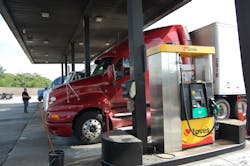The growing uncertainty surrounding oil prices presents a major challenge to all price forecasts, according to the Energy Information Administration (EIA), with the agency’s most recent Short-Term Energy Outlook (STEO) projecting that Brent crude oil prices will average between $58 per barrel (bbl) in 2015 and $75/bbl in 2016, with annual average West Texas Intermediate (WTI) prices expected to be $3/bbl to $4/bbl below the Brent price mark.
Those price projections reflect a scenario in which supply is expected to continue to exceed demand, EIA noted, leading to inventory builds through the first three quarters of 2015. Yet with increased demand and weakening supply expected to occur this year, the global oil market should then become more balanced beyond mid-2015 – meaning oil prices should begin to rise again.
For now, however, crude oil prices remain at a six-year low, the agency pointed out, with December marking the sixth consecutive month in which monthly average Brent crude oil prices decreased – falling $17/barrel (bbl) from November to a monthly average of $62/bbl, the lowest price point since May 2009.
The December price decline, and its continuation into early January, reflects continued growth in U.S. tight oil production, strong global supply, and weakening outlooks for the global economy and oil demand growth, EIA noted.
Average retail pump prices for both diesel and gasoline in the U.S. thus continue to decline as well, the agency added.
Diesel dropped 12 cents this week to a national average retail pump price of $2.933 per gallon, which is 94 cents cheaper per gallon compared to the same week in 2014, EIA said.
Diesel prices dipped below the $3 per gallon mark in five regions across the country this week, the agency reported, falling the most in the Rocky Mountains – a 14.3 cent drop to $2.884 per gallon – and the West Coast with California’s prices removed recording a 15.2 cent decline to $2.826 per gallon.
The Lower Atlantic ($2.918), Midwest ($2.843) and Gulf Coast ($2.884) rounded out the sub-$3 per gallon diesel areas, with EIA noting that all reported a 12.1 cent decline in prices this week.
The national average retail pump price for gasoline dipped 7.3 cents this week to $2.066 per gallon, EIA said, which is $1.23 per gallon cheaper compared to the same week in 2014.
On a regional basis, gasoline prices fell below the $2 per gallon mark in the Midwest ($1.918 per gallon), the Gulf Coast ($1.844) and the Rocky Mountains ($1.908).
New England sported the largest one-week decline in gasoline prices, the agency noted: a 12.8 cent dip to $2.222 per gallon.
Overall, EIA now expects global petroleum and other liquids demand to grow by 1.0 million barrels per day (bbl/d) in both 2015 and 2016 from an average of 91.4 million bbl/d in 2014, with nearly all the forecast demand growth coming from non-OECD (Organization for Economic Cooperation and Development) countries.
As always, weaker-than-expected demand in Russia, China, or elsewhere would put further downward pressure on prices, the agency cautioned.
Also, given the rapid growth in oil production throughout 2014, the year-over-year comparisons between 2015 and 2014 oil production overstate projected growth in 2015 relative to levels at the end of 2014, EIA added.
Oil prices could deviate significantly from current projections under different supply and demand conditions, the agency pointed out, as weaker-than-expected global demand growth would increase the supply overhang requiring larger production cuts to bring the market into balance with producer responsiveness to lower prices will determine how soon, and by how much, production is cut and is thus difficult to forecast accurately, EIA stressed.
About the Author
Sean Kilcarr
Editor in Chief
Sean Kilcarr is a former longtime FleetOwner senior editor who wrote for the publication from 2000 to 2018. He served as editor-in-chief from 2017 to 2018.
